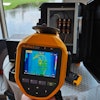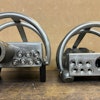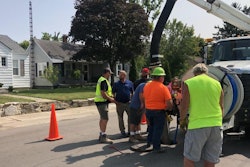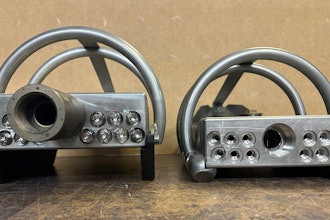How today’s test and measurement tools should do more than just one job, and where the real payoff lies.
We all realize the need for the maintenance department to keep up with regular predictive activities. But simply conducting these regular reviews of equipment is only half the battle. What matters more, these days, is what to do with the information that these predictive activities yield.
“The need to take measurement data and turn it into actionable information is growing rapidly,” says Fluke’s John Neeley. Since its founding in 1948, Fluke has helped define and grow a unique technology market, providing testing and troubleshooting capabilities that have grown to mission critical status in manufacturing and service industries. The company’s latest offering – Fluke Connect – has been developed in order to maximize communication amongst maintenance personnel, with the ultimate goal of merging and storing data in a way that facilitates identification of critical trends.
Fluke Connect is comprised of over 20 connectable tools that can test and diagnose from the field, while communicating and sharing measurement data through an app. As the chief architect for Fluke Connect, Neeley has often found that reliability programs need the ability to track both measurement data and asset data over time, and yet, “the vast majority of existing measurement tools display a measurement, and then it’s gone.”
The 4 Major Hurdles Of A Preventive Maintenance Program
According to Neeley, preventive maintenance programs run into four major hurdles: affordability security, reliability and complexity. It’s oftentimes the case that industrial end users find themselves with the right intentions, and a mess of complex testing equipment collecting dust as they struggle to understand how to appropriately work with the tools they have.
For Neeley, these four hurdles can be easily addressed if you look at the following technological leaps that have developed to provide more effective solutions for the maintenance department:
• Affordability – A cloud based system can be implemented at a fraction – 10 percent, maybe even less – of the cost for the equipment, staffing and maintenance costs needed for on-site big iron, explains Neeley.
• Security – There is now sufficient expertise in cloud-based applications that customers can deploy such a system with little fear of data loss, theft or malicious misuse.
• Reliability – Preventive maintenance programs can fail because of the lack of reliable data. Traditional “man-meter-pencil” systems are error-prone and require more work to transcribe the data from the clipboard in to the database, introducing another point of potential error. “Maintenance managers need reliable data that can be input simply and accurately. The data needs to be traceable, and able to accept multiple formats, including annotated images,” Neeley says. “An ideal system would allow data input through a means that current workers understand, such as a smart phone.”
• Complexity – Look for a simple, turnkey system that does not require development or involvement from the IT department. Many IT departments embrace this because it’s a burden they no longer have to support. “The first two (points) are a rising tide that lifts all boats,” he says. “A maintenance manager should be able to find improvements in these areas from most vendors. The last two are differentiators. Look closely for a preventive maintenance supplier that integrates all elements while making the user experience as simple as possible for both installation and daily use.”
The Main Focus: The User
In the end, it’s important to keep predictive maintenance programs – and the related technology required – simple for the user. Says Neeley, “Early attempts have given the user a different software program for each measurement tool. What they really need is one common point where all measurement data, combined with historical asset data, can be easily stored and analyzed. Fluke is working hard to accomplish this from both a technical standpoint and a user experience standpoint. Future possibilities include the ability to take any measurement, send it to any remote location, relate it to any other data, and return decisions and action to the point of measurement.”























